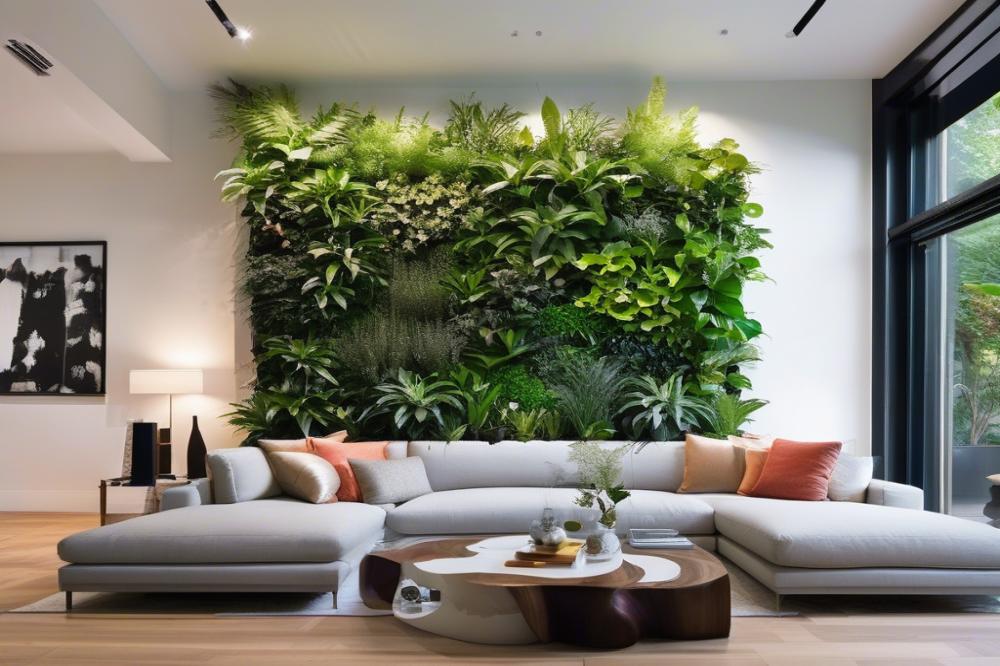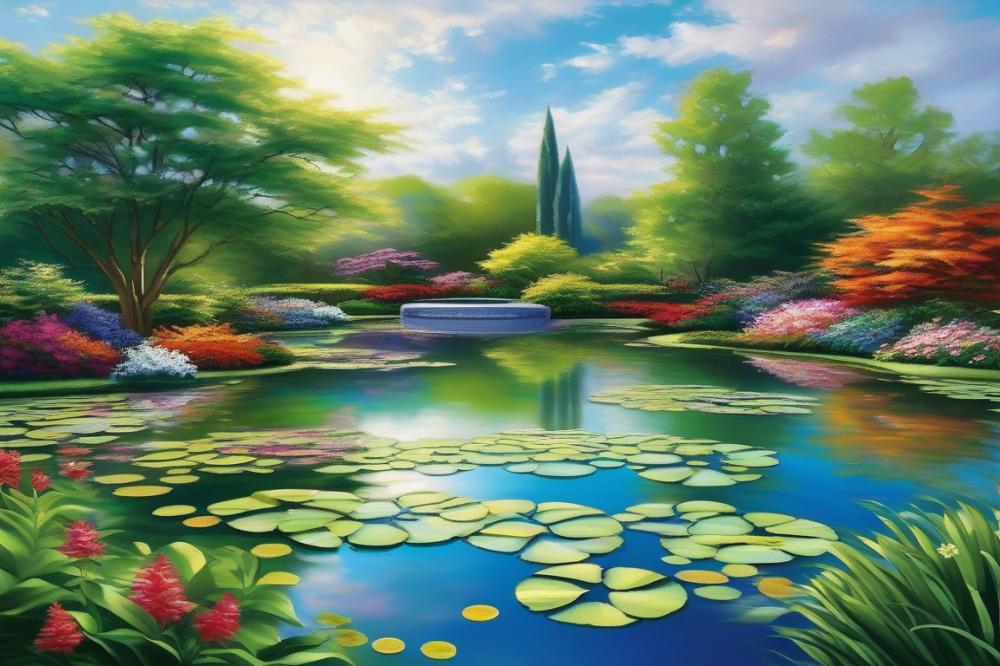Introduction
A living wall is an impressive structure containing various plants placed on a vertical surface. These walls have gained popularity in modern home decor, bringing nature indoors in a striking way. They not only add beauty but also serve practical purposes. In an era where aesthetics and function go hand in hand, creating a vibrant space with a living wall has never been more appealing.
The presence of indoor plants offers numerous benefits for individuals and families alike. One significant advantage is air purification. Plants can filter pollutants and improve indoor air quality, making your home a healthier environment. They absorb toxins, producing fresh oxygen in return. With clean air, your living space becomes more inviting and rejuvenating.
Emphasizing green living is more crucial now than ever. People are looking for ways to reduce their environmental footprint. Incorporating a vertical garden into your home supports sustainability in multiple ways. It encourages DIY gardening techniques, such as hydroponics, which allow for efficient plant care. Moreover, these walls can thrive in small spaces, making them perfect for urban dwellers.
Additionally, living walls contribute to effective garden design. They create a captivating focal point in any room while showcasing an array of colors and textures. Whether you choose herbs, succulents, or flowering plants, the possibilities are endless. Various wall planters enable customization to suit both style and space. As an element of home decor, they transform ordinary walls into lively displays of nature.
Types of Living Walls
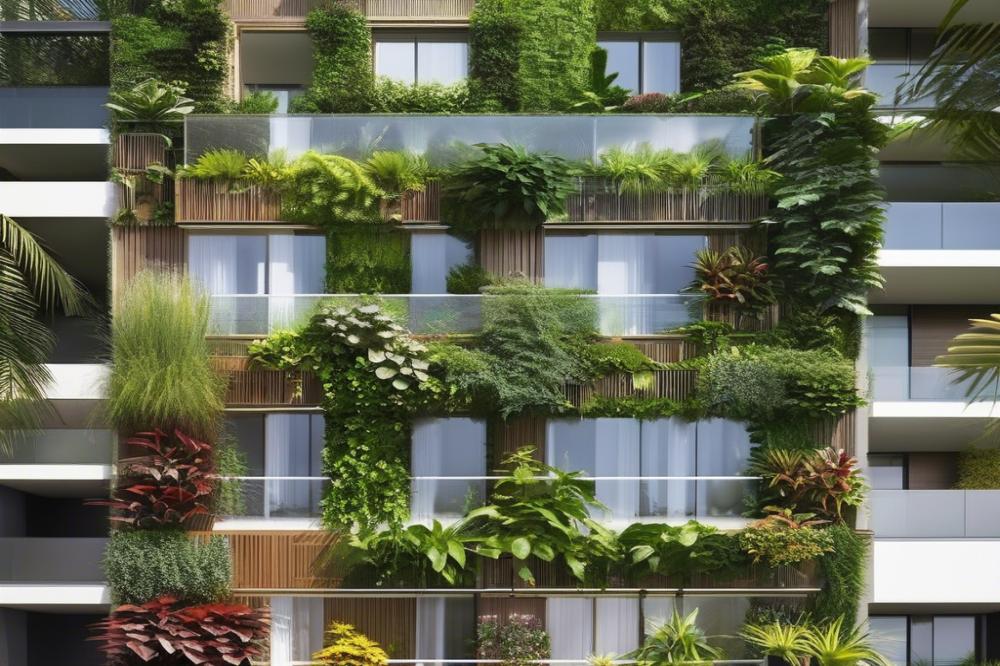

When considering a vertical garden, you’ll encounter various types that cater to different needs and spaces. Modular systems stand out for their flexibility. These kits allow you to mix and match different plants easily. Panel systems offer a sleek, uniform look, ideal for modern aesthetics. Hydroponic setups take this a step further by providing plants with nutrients directly through water, eliminating the need for soil.
Furthermore, differences exist between indoor and outdoor installations. indoor plants thrive in controlled environments, requiring lower light levels and careful humidity. In contrast, outdoor setups must cope with changing weather and pests. Choose your plants wisely based on where you intend to install your garden.
Garden design plays a crucial role in enhancing your home decor. Varying designs allow you to express personal style. A living wall can dramatically change a room’s ambiance, bringing nature indoors. Air purification benefits are a plus too; many plants filter toxins from the air. Moreover, sustainability is a key factor for many. Growing your own plants contributes to green living, and it feels good to nurture them.
Plant care will differ based on your chosen system. A DIY gardening project can be rewarding. Regular maintenance is needed, so plan for watering schedules and trimming. The effort pays off in aesthetics and health benefits. Consider incorporating a wall planter that showcases trailing vines for a dynamic effect.
Your choice in garden type shapes the overall look of your space. Each style offers distinct advantages. Be sure to select the right plants to suit their placement. Whether you’re drawn to the simplicity of hydroponics or the structure of modular systems, there’s a lovely option for every home.
Planning Your Living Wall
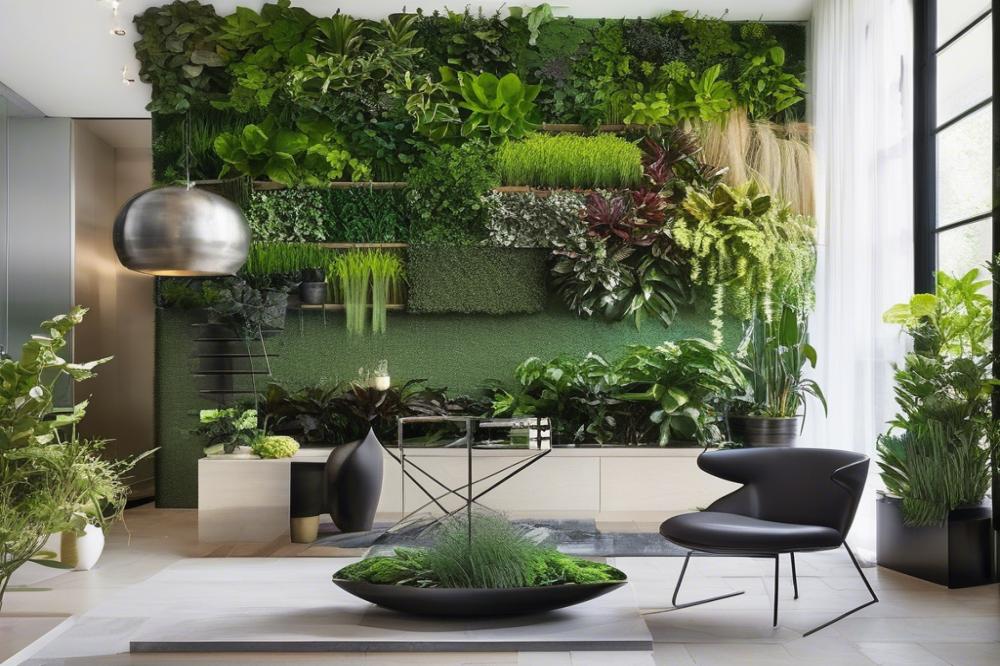

Evaluating the space available for a living wall is crucial. Start by checking your walls for the perfect location. Some walls may receive bright light while others are shaded. Spotting the right balance of sunlight is vital. This will greatly influence your plant selection.
Consider the light conditions in your home. South-facing walls typically get plenty of sunlight. North-facing walls receive less light, but that doesn’t mean you can’t have a green display. Different indoor plants thrive in varying conditions. Assess these conditions carefully before proceeding with your garden design.
Selecting the right plants is essential for success. Look for indoor plants that suit your space. Some thrive in lower light, while others need brighter surroundings. Popular choices include ferns and pothos, which flourish well in Vertical gardens. These options not only enhance home decor but also contribute to air purification.
Compatibility among plant species is also key. Mixing tropical plants with other varieties can create a beautiful mosaic. Choose plants that support each other’s needs for moisture and light. Research hydroponics if you’re interested in a soil-less system. This could make plant care easier and more efficient.
Think about sustainability when planning this project. Using a wall planter filled with native plants can provide multiple benefits. Native species typically require less water and care due to better adaptation. Incorporating them supports green living and maintains local ecosystems.
Don’t forget about aesthetics! A living wall isn’t just for function; it should be visually appealing too. Arrange plants considering their heights and colors. This creates depth and dimension. Your unique design will stand out in your home.
DIY gardening projects can be rewarding. Many resources are available online to help you with installation techniques. Experiment with different layouts and plant types until you find the perfect match for your style. Enjoy the journey of creating your indoor oasis.
Materials and Tools Needed
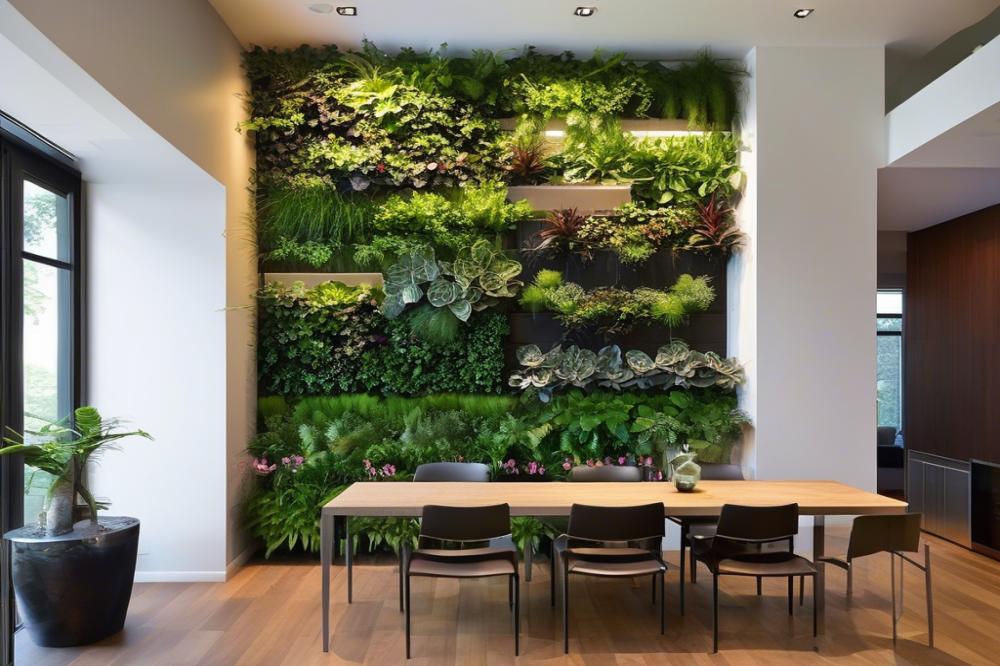

Creating a stunning living wall in your home requires specific materials. Begin with a wall planter; this is essential for holding your indoor plants. A variety of styles is available, from modular systems to vertical planters, so you can choose one that fits your garden design. Next, high-quality soil is a must. Look for potting mix that retains moisture while allowing for good drainage.
To help your plants thrive, plant nutrients are important. Fertilizers designed specifically for indoor plants can enhance growth and overall health. Additionally, consider a watering system. Drip irrigation or simple watering cans can help you provide consistent moisture.
Tools for Installation
Installing the living wall requires some basic tools. First, you will need a level to ensure your wall planters are installed evenly. A drill may also be necessary for securely attaching planters to the wall. Don’t forget your tape measure; it helps with accurate spacing and alignment. Depending on your design, you might also need a utility knife to cut any materials.
After installation, several tools assist in ongoing plant care. Pruning shears are essential for maintaining the shape and health of your indoor plants. A moisture meter can help you check soil conditions quickly. This will help prevent overwatering or underwatering.
DIY Gardening vs. Pre-Made Kits
For those who enjoy a hands-on approach, DIY gardening allows you to customize every aspect of your living wall. With this option, you can select specific plants that suit your style and air purification needs. It’s an engaging project that enhances sustainability in your home. Alternatively, purchasing pre-made living wall kits can be a convenient choice. These kits often come with everything needed, simplifying the process significantly.
Each option offers distinct advantages. While DIY gives you creativity and control, kits provide ease and efficiency. Ultimately, the choice depends on your comfort level and the amount of time you want to invest. Whichever path you take, having a living wall can brighten your home decor and promote green living.
Exploring different materials and tools can make your project more enjoyable. Embrace the journey of creating your vertical garden, and watch your space transform into a vibrant oasis.
Installation Techniques
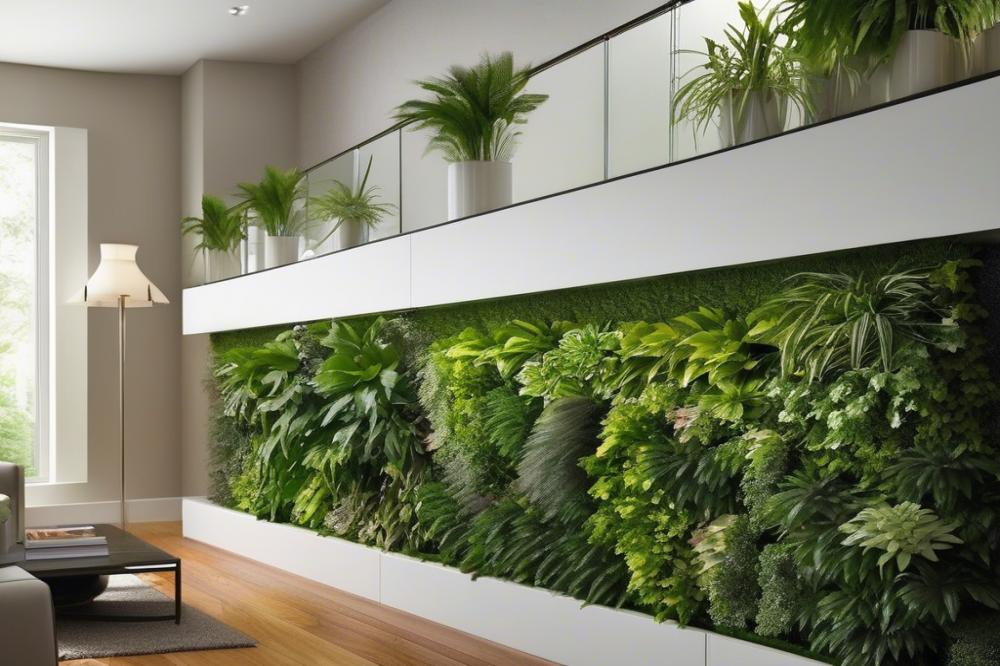

Installing a living wall can transform your home decor and promote green living. This step-by-step guide will walk you through the process. First, decide where you want to place your wall planter. Consider light conditions and visibility. Indoor plants need adequate light to thrive, so choose a spot that receives plenty of it.
Next, you need to select your plants. Opt for varieties that grow well together. Some options include ferns, succulents, or herbs. Think about the care they require, too. You’ll want to ensure your choices are easy to maintain and fit your design goals.
Vertical Gardening Techniques
The installation will vary depending on your chosen method. Hydroponics is a great option for those who want low maintenance and fast growth. You’ll need a system that circulates water and nutrients. If soil-based planting aligns more with your style, create pockets for each plant. You can use felt or specially designed modular systems.
Watering is crucial for both methods. For hydroponics, set up a drip irrigation system. This keeps the plants hydrated and reduces waste. If you are using soil, regularly check moisture levels. Overwatering is a common pitfall, so be cautious.
Safety Tips
Be aware of safety during installation. Use sturdy materials for your wall structure. Reinforce the mounting to handle the weight of both plants and soil. If using hydroponic systems, ensure electrical connections are safe from water. This reduces risks of shorts or hazards.
Additionally, use gloves when handling soil and plants. This prevents allergies and irritation. Avoiding common pitfalls can save you headaches later. Don’t overcrowd your planter; this stunts plant growth. Every plant needs space to breathe and flourish.
Lastly, have a maintenance plan ready. Regular plant care helps in sustaining your living wall. Routine checks for pests or diseases will keep your indoor plants thriving. Embrace these techniques for a successful DIY gardening experience.
Plant Care and Maintenance
Maintaining plants in a wall planter is key to keeping your home decor vibrant. Start with a regular watering schedule. Indoor plants typically require more moisture than you might expect. Check your setup frequently. Make sure the plants are not drying out or sitting in excess water. Hydroponics systems can help regulate moisture, but you must still pay attention.
Nutrient needs are critical for healthy growth. Fertilize your plants every few weeks. Use a balanced liquid fertilizer that suits the types of plants you chose for your garden design. This will enhance their growth and promote air purification. Remember that different plants have varying requirements for nutrients. Some might need more frequent feeding than others. Keep labels handy to track their specifics.
Pruning and Plant Rotation
Routine pruning is essential for happy plants. Remove any dead or yellowing leaves to make room for new growth. This not only improves the look of your living installation but also helps prevent disease. Consider rotating different plants as they mature. This practice can promote optimal growth and aesthetic appeal. Plus, it gives you the opportunity to try out new species over time, adding to your enjoyment of green living.
Monitoring Health and Troubleshooting
Always keep an eye on your plants for signs of distress. Yellow leaves, wilting, or pests can indicate problems. If you notice any issues, check first if they are getting too much or too little water. Adjusting the watering routine can make a significant difference. Inspect for pests regularly, as they can quickly spread to other plants. Utilizing natural pest control options can keep your living wall healthy without harsh chemicals.
Your DIY gardening efforts will pay off if you’re vigilant. Avoid neglecting plant care just because they seem fine. Catching issues early makes all the difference. Always remember that your indoor plants contribute to sustainability. Their presence in your home not only beautifies the space but also enhances air quality. So, maintain them well for lasting enjoyment!
Final Thoughts on Your Green Oasis
Creating a green space in your home offers numerous benefits. An indoor garden enhances air quality by filtering toxins and releasing oxygen. This boost in air freshness can improve your mood and overall well-being. A living wall can transform any dull room into a vibrant area filled with life and color.
Consider how such an installation reflects your commitment to sustainable living. You’ll be doing your part in reducing your carbon footprint while enjoying the beauty of nature indoors. Home decor becomes more dynamic when you incorporate plants. They add texture and depth, making your space feel welcoming and cozy.
The beauty of having a vertical garden is that it’s not just visually appealing; it’s also a conversation starter. Friends and family will admire your commitment to both style and the environment. You might inspire them to think about their own green initiatives at home.
In summary, adding a living wall is more than just an aesthetic choice. It’s a step toward healthier living and a celebration of nature within your daily life. Why not take this opportunity to embrace a sustainable lifestyle while enhancing your home’s appeal? The impact of indoor plants can be profound. Embrace the beauty and benefits of this green addition today!

